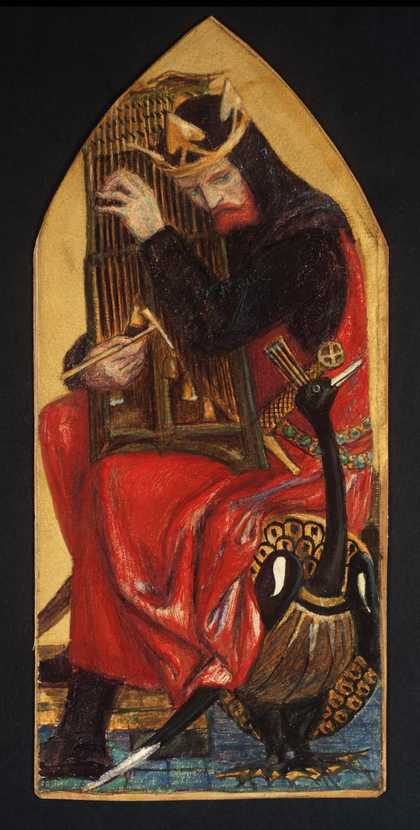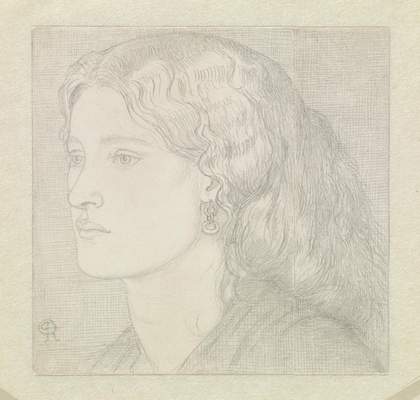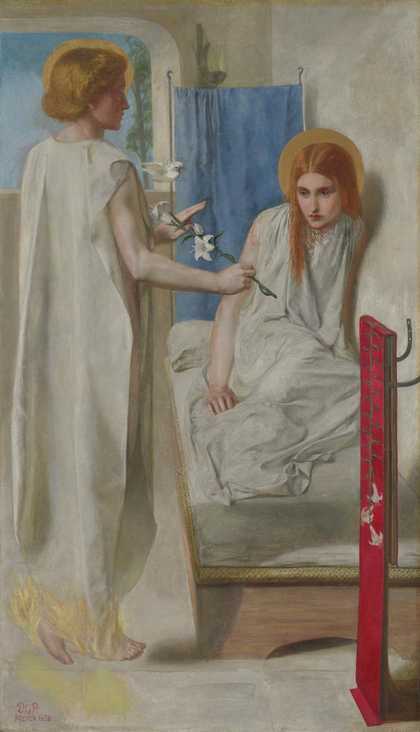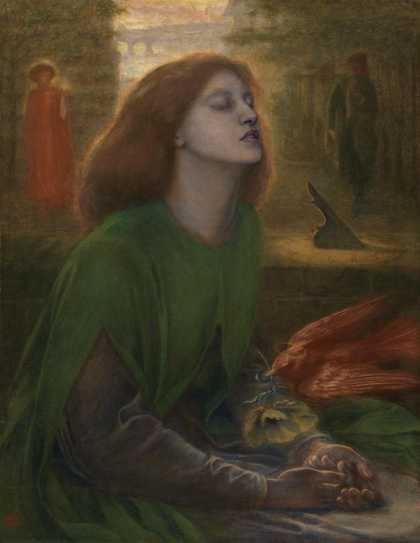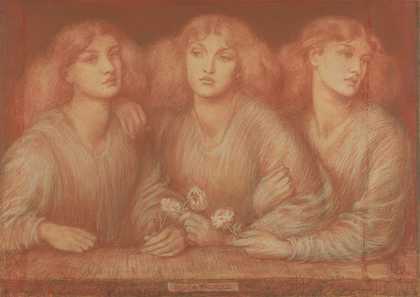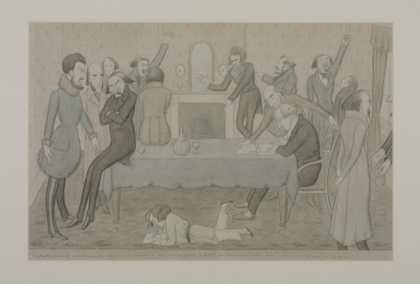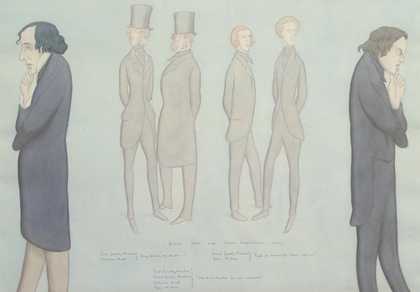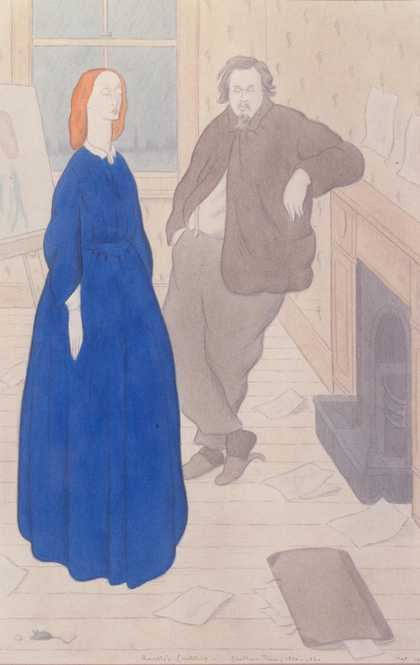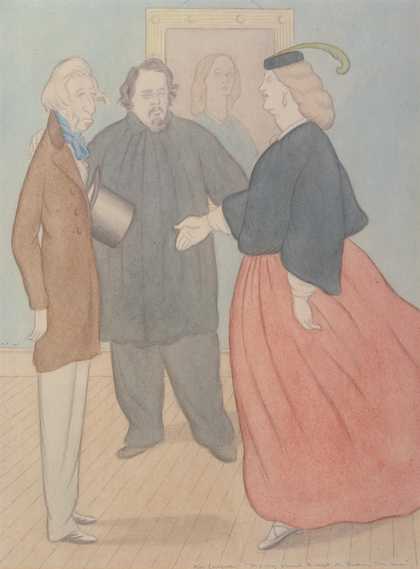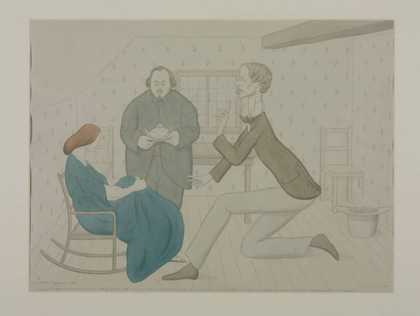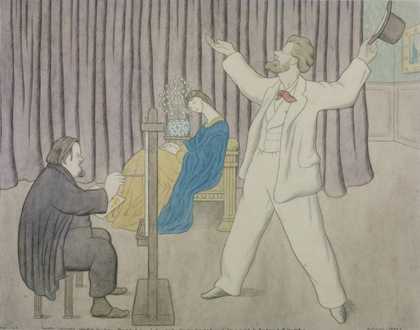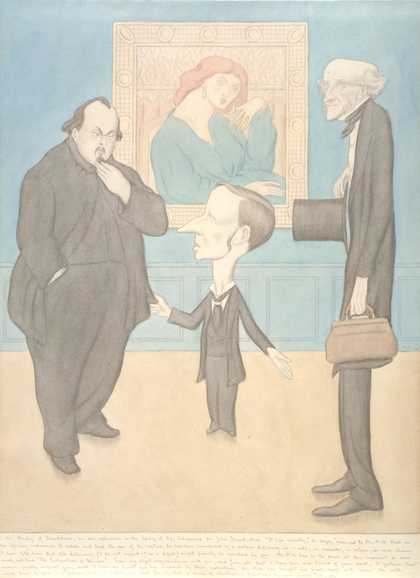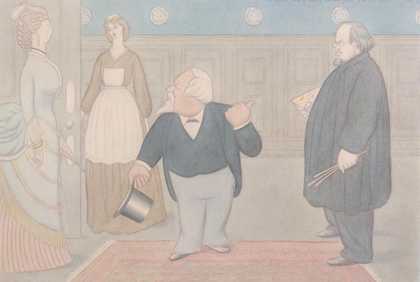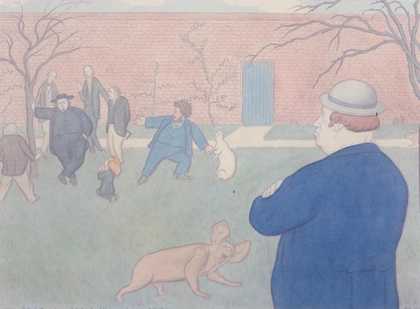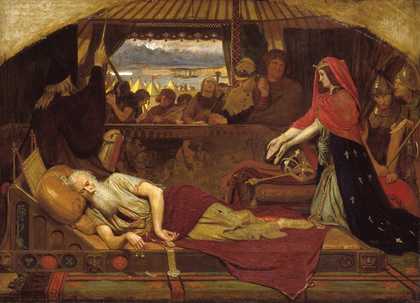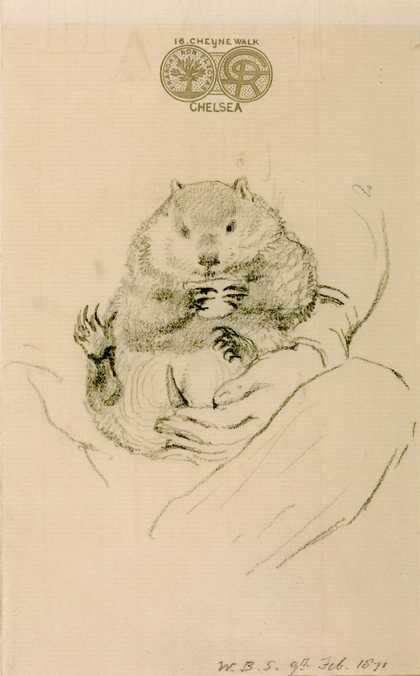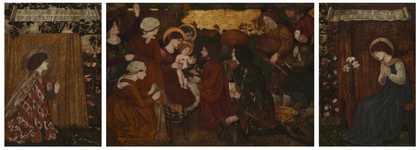Artist biography
In August 1848 he moved with William Holman Hunt to a studio in Cleveland Street and around September that year founded, with Holman Hunt and J.E. Millais, the Pre-Raphaelite Brotherhood. He finished his translation of Dante's Vita Nuova in October 1848. He exhibited his first major oil painting, The Girlhood of Mary Virgin (Tate Gallery N04872), at the Free Exhibition in March 1849. In September and October of that year he visited Paris and Flanders with Holman Hunt, and was greatly impressed by mediaeval and Renaissance art. He probably met his future wife and frequent model Elizabeth Siddall late in 1849; they married in 1860. He was largely responsible for the Pre-Raphaelite magazine The Germ, published in 1850. In April 1850 he exhibited Ecce Ancilla Domini! (Tate Gallery N01210) at the National Institution, but rarely showed in public thereafter following the picture's negative reception.
From 1854 he was friendly with the critic John Ruskin, who was instrumental in bringing the Pre-Raphaelites to public attention, and in 1855-6 with the poet Robert Browning. In 1855 he went to Paris to see the Exposition Universelle. In 1856 he met Edward Coley Burne-Jones and William Morris; he was a contributor to Morris's Oxford and Cambridge Magazine. Five of his illustrations were included in Moxon's edition of Tennyson's Poems (published 1857). He showed eight works in the private Pre-Raphaelite exhibition, held at Russell Place in July 1857. Also that year he worked on the Oxford Union murals, during which time he met Jane Burden. Jane married William Morris but she and Rossetti had an intimate relationship which spanned decades, and she posed for some of Rossetti's best-known paintings (see Proserpine, 1874, Tate Gallery N05064). In 1858 Rossetti founded the Hogarth Club, an exhibiting and social club, with Madox Brown and others. Around this time he met Fanny Cornforth, who became his primary model and mistress for the next decade. Rossetti's translation of The Early Italian Poets was published in 1861. In 1862 Elizabeth Siddall died from an overdose of laudanum. The artist visited Belgium with his brother William in 1863, and was in Paris in 1864. In 1865 he met Alexa Wilding, who became an important model for him.
From the mid-1860s he began suffering from eye trouble and insomnia, and showed signs of paranoia. In October 1869 he exhumed his wife's coffin to retrieve his Poems, which were published in 1870. His health broke down in 1872 and he abandoned most of his old friendships. He spent long periods at Jane and William Morris's Kelmscott Manor between 1871 and 1874. A new edition of Poems was published in 1881 together with Ballads and Sonnets. He died at Birchington-on-Sea, Kent.
Further reading:
Virginia Surtees, Dante
Gabriel Rossetti 1828-1882. The Paintings and Drawings: A Catalogue Raisonné, 2 volumes, Oxford 1971Leslie Parris (ed.), The Pre-Raphaelites, exhibition catalogue, Tate Gallery, London 1984, reprinted 1994
Terry Riggs
February
1998
Wikipedia entry
Gabriel Charles Dante Rossetti (12 May 1828 – 9 April 1882), generally known as Dante Gabriel Rossetti ( rə-ZET-ee; Italian: [rosˈsetti]), was an English poet, illustrator, painter, translator, and member of the Rossetti family. He founded the Pre-Raphaelite Brotherhood in 1848 with William Holman Hunt and John Everett Millais. Rossetti inspired the next generation of artists and writers, William Morris and Edward Burne-Jones in particular. His work also influenced the European Symbolists and was a major precursor of the Aesthetic movement.
Rossetti's art was characterised by its sensuality and its medieval revivalism. His early poetry was influenced by John Keats and William Blake. His later poetry was characterised by the complex interlinking of thought and feeling, especially in his sonnet sequence The House of Life. Poetry and image are closely entwined in Rossetti's work. He frequently wrote sonnets to accompany his pictures, spanning from The Girlhood of Mary Virgin (1849) and Astarte Syriaca (1877), while also creating art to illustrate poems such as Goblin Market by his sister Christina Rossetti.
Rossetti's personal life was closely linked to his work, especially his relationships with his models and muses Elizabeth Siddal (whom he married), Fanny Cornforth, and Jane Morris.
This biography is from Wikipedia under an Attribution-ShareAlike Creative Commons License. Spotted a problem? Let us know.
Read full Wikipedia entry



